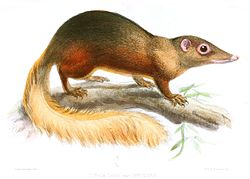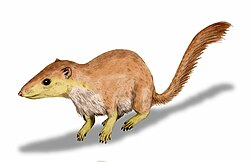| Primatomorpha | |
|---|---|
 | |
 | |
| Scientific classification | |
| Kingdom: | Animalia |
| Phylum: | Chordata |
| Class: | Mammalia |
| Magnorder: | Boreoeutheria |
| Superorder: | Euarchontoglires |
| Grandorder: | Euarchonta |
| Mirorder: | Primatomorpha Beard, 1991 [3] |
| Orders | |
| |
Primatomorpha is a proposed mirorder of mammals containing the orders Dermoptera (or colugos) and Primates. Primatomorpha is sister to Scandentia, together forming the Euarchonta.





